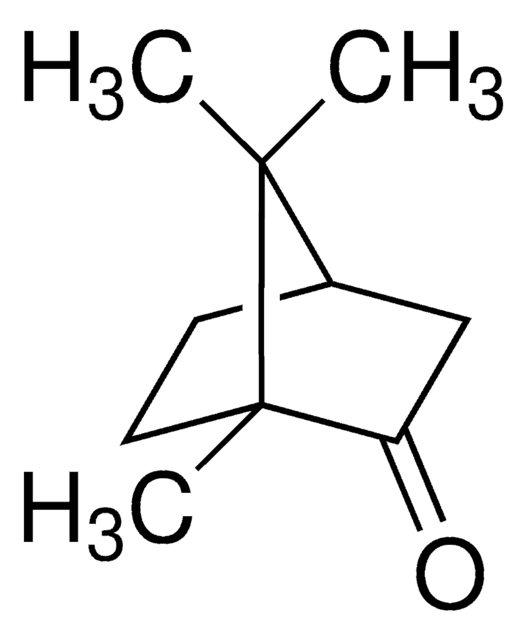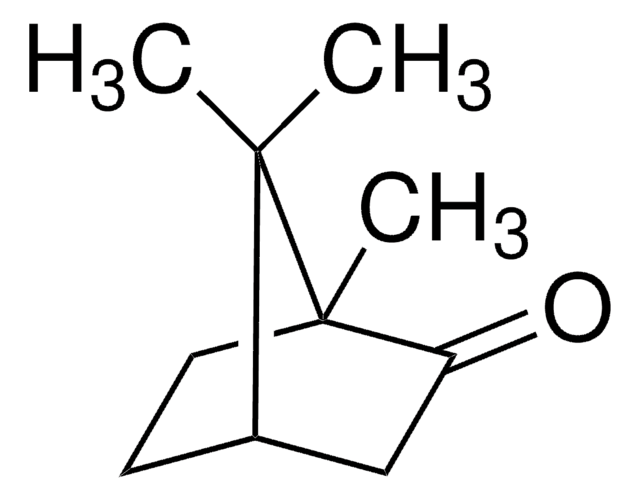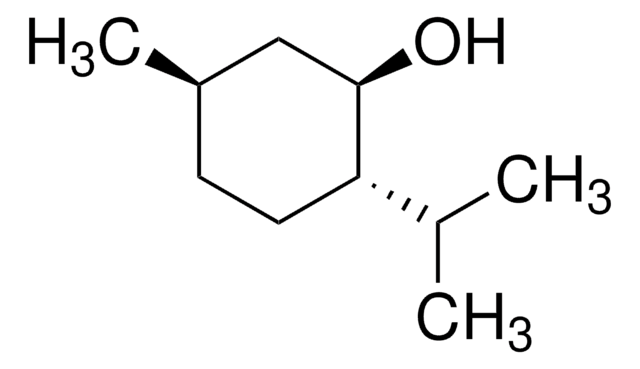Kluczowe dokumenty
50843
D-Camphor
analytical standard
Synonim(y):
2-Bornanone, 2-Camphanone
About This Item
Polecane produkty
Poziom jakości
klasa czystości
analytical standard
gęstość pary
5.24 (vs air)
ciśnienie pary
4 mmHg ( 70 °C)
Próba
≥97.5% (GC)
aktywność optyczna
[α]/D +43.0±2.0°, c = 10 in ethanol
temp. samozapłonu
870 °F
okres trwałości
limited shelf life, expiry date on the label
granice wybuchowości
3.5 %
metody
HPLC: suitable
gas chromatography (GC): suitable
mp
178-182 °C (lit.)
Zastosowanie
cleaning products
cosmetics
flavors and fragrances
food and beverages
personal care
Format
neat
ciąg SMILES
CC1(C)[C@@H]2CC[C@@]1(C)C(=O)C2
InChI
1S/C10H16O/c1-9(2)7-4-5-10(9,3)8(11)6-7/h7H,4-6H2,1-3H3/t7-,10+/m1/s1
Klucz InChI
DSSYKIVIOFKYAU-XCBNKYQSSA-N
Szukasz podobnych produktów? Odwiedź Przewodnik dotyczący porównywania produktów
Opis ogólny
Zastosowanie
Hasło ostrzegawcze
Danger
Zwroty wskazujące rodzaj zagrożenia
Zwroty wskazujące środki ostrożności
Klasyfikacja zagrożeń
Acute Tox. 4 Inhalation - Eye Dam. 1 - Flam. Sol. 2 - Skin Irrit. 2 - STOT SE 2 Inhalation
Organy docelowe
Lungs
Kod klasy składowania
4.1B - Flammable solid hazardous materials
Klasa zagrożenia wodnego (WGK)
WGK 1
Temperatura zapłonu (°F)
147.2 °F - closed cup
Temperatura zapłonu (°C)
64 °C - closed cup
Wybierz jedną z najnowszych wersji:
Certyfikaty analizy (CoA)
Nie widzisz odpowiedniej wersji?
Jeśli potrzebujesz konkretnej wersji, możesz wyszukać konkretny certyfikat według numeru partii lub serii.
Masz już ten produkt?
Dokumenty związane z niedawno zakupionymi produktami zostały zamieszczone w Bibliotece dokumentów.
Klienci oglądali również te produkty
Nasz zespół naukowców ma doświadczenie we wszystkich obszarach badań, w tym w naukach przyrodniczych, materiałoznawstwie, syntezie chemicznej, chromatografii, analityce i wielu innych dziedzinach.
Skontaktuj się z zespołem ds. pomocy technicznej








